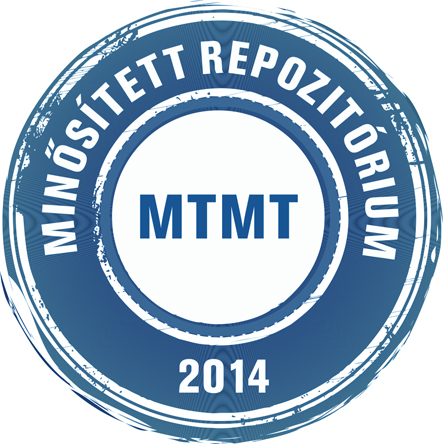B. Tóth Ágnes; Miháczi-Pálfi Anett; Szebenyi Tamás: "Rejtélyes fibulák" : régészeti vizsgálatok egy szokatlan tárgycsoport témájában.
|
Cikk, tanulmány, mű
regeszeti_monografiak_008_177-204.pdf Letöltés (8MB) |
Absztrakt (kivonat)
The extremly versatile find material at the Department of Classical Philology and Ancient History of the University of Debrecen is one of the less known archaeological collections in Hungary. The majority of objects there probably originate from various gifts and excavations, which were carried over by the professors of the Archaeological Department/Institute (Nándor Láng, Márton Roska and István Járdányi-Paulovics) between 1914 and 1952. Despite its importance, the find material was totally forgotten and a large quantity of items was lost during the multiple relocations. The identification of objects had begun again only in 2016. The lack of relevant inventories make the process slow, as we can mainly use indirect sources to determine the origin of the find material. The “mysterious brooches” were found in this collection, too. The seven unique items (six complete and one fragmentary) represent an unusual type in the find material of the Carpathian Basin (Fig. 1–7, 9). We only know their inventory numbers (R21–R27), otherwise the circumstances of their origins are unknown. It seems that their closest analogies are the brooches of the Schmidt collection (Fig. 8: 1–3.). It was Tibor Nagy who in 1962, called the attention of the research to these brooches. It is suspicious that their origins can’t be determined, like our objects from Debrecen. Unfortunately, these items were also lost during or after the Second World War, we only know them from photographs. Nagy sorted the brooches of the Schmidt collection into the Hunnic Period. In 1991, István Bóna referred to the brooches from the Schmidt collection as belonging to a set of brooches that had been taken from the Caucasus region. He collected the analogies of the type in Hungary and in the Northern Caucasus region. Among the Pannonian analogies, the one from the Pilismarót–Malompatak site (Fig. 8: 4) looks to some extent similar, but can’t be handled as an analogy of the items studies in this article. Overall, their technological design and the lack of information on their background make a strong suspicion against their originality. To answer this question, we conducted archaeometric studies in two independent institutes: at the Institute for Geological and Geochemical Research, Research Centre for Astronomy and Earth Sciences (by Viktória Mozgai and Bernadett Bajnóczi) and at the Museum of Satu Mare (by Gheorghina Olariu and Cristian Virag). Results indicate that the brooches were manufactured of pure copper, with one exception (R26) (Fig. 6), which was made of brass. The objects were decorated with fire-gilding based on the detected mercury.
| Mű típusa: | Konferencia vagy workshop anyag |
|---|---|
| Egyéb cím: | "Mysterious brooches" : archaeological investigations in the case of an unusual find type |
| Befoglaló folyóirat/kiadvány címe: | Párducz 111. : konferencia Párducz Mihály (1908-1974) emlékére |
| Dátum: | 2020 |
| Kötet: | 8 |
| ISSN: | 2062-9877 |
| ISBN: | 978-963-306-774-1 |
| Oldalak: | pp. 177-204 |
| Sorozat neve: | Monográfiák a Szegedi Tudományegyetem Régészeti Tanszékéről |
| Nyelv: | magyar |
| Kiadó: | Szegedi Tudományegyetem Régészeti Tanszék |
| Kiadás helye: | Szeged |
| Konferencia neve: | Párducz 111. : konferencia Párducz Mihály (1908-1974) emlékére |
| Konferencia típusa: | Konferencia |
| Helyszin: | Szeged |
| Dátum: | 2019 |
| Befoglaló mű URL: | https://acta.bibl.u-szeged.hu/76787/ |
| Kulcsszavak: | Régészet - leletek |
| Megjegyzések: | Bibliogr.: p. 201-203. és a lábjegyzetekben ; ill. ; összefoglalás angol nyelven |
| Szakterület: | 06. Bölcsészettudományok 06. Bölcsészettudományok > 06.01. Történettudomány és régészet |
| Feltöltés dátuma: | 2022. nov. 09. 15:57 |
| Utolsó módosítás: | 2022. nov. 09. 15:57 |
| URI: | http://acta.bibl.u-szeged.hu/id/eprint/76976 |
 |
Tétel nézet |



